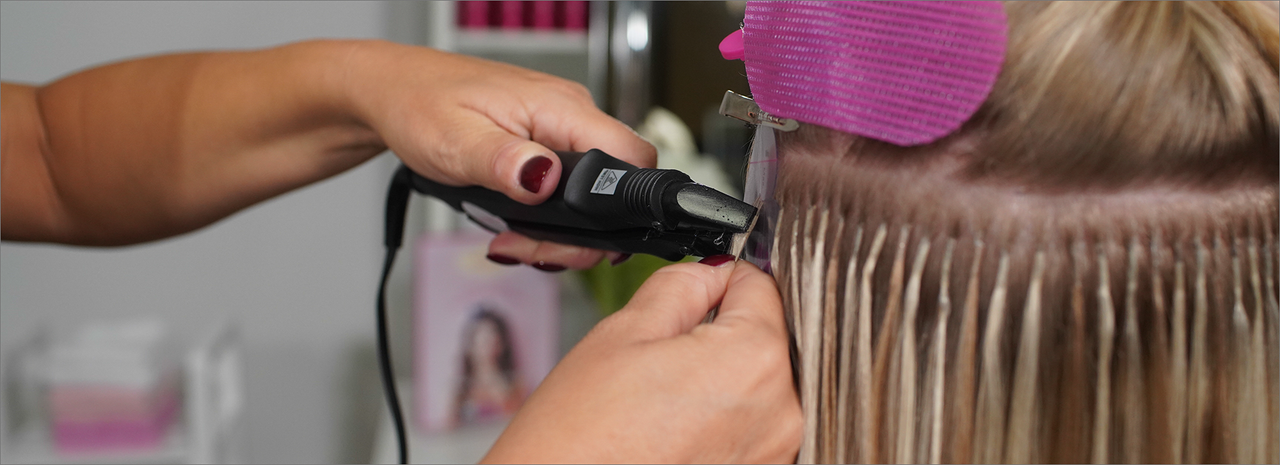Every hair type has its advantages and disadvantages, and the same thing goes for every hair color. But blonde hair, in particular, seems to have a hard time maintaining its own color. Whether it’s turning green, orange, or even pink, you can trace this identity crisis back to one simple thing: mineral deposits.
What are mineral deposits? Mineral deposits are buildups of natural, inorganic solids like copper and iron on the scalp and hair shaft. These deposits can chemically react with the proteins in your hair, leaving you with dull, brittle, discolored tresses. This is true of both color-treated hair and natural hair, though color-treated hair is more susceptible to color change because of its porosity (higher absorbency).
Why is blonde hair more susceptible? The short answer is because blonde hair is lighter, or less pigmented, than all other hair colors. Less pigmentation means that there is less color saturation in the hair, leaving room for outside substances to stain and color the hair (think of how white sheets stain more easily than brown or black ones). More lightness means that subtle changes in the hair are drastically more visible (think of how a stain on a white sheet is more pronounced than a stain on a brown or black sheet).
How do the minerals get into the hair? Minerals can be found in everything from your pool water to your well water, and you can be sure that this hard, mineral-intense water is making it to your shower nozzle every time you turn it on. Mineral intensity and composition can vary by region, so one user may experience a different reaction to minerals than another user that lives in a different region. Repeated exposure to these minerals results in buildup, and buildup enables the minerals to react with the hair…etcetera etcetera.
Which minerals should I look out for? Oxidized copper, which can be found in both pool water and shower water, is known to turn blonde hair green. Iron is typical of well water, and it can leave blonde hair brassy and orange, or even pink!
How do I prevent mineral buildup? There are lots of things you can do to prevent mineral buildup in your hair. First, you’ll want to address your water. Consider buying a water filter for your shower, washing the hair with distilled water, or washing with only cold water to seal the cuticle and prevent minerals from getting in. Next, you should address any problems with hair porosity prior to exposing the hair to hard, mineral-rich water. This could involve avoiding heat styling tools, applying a pre-shower or pre-swimming leave-in conditioner to pre-saturate hair, or applying hot-oil treatments for long-term moisture saturation.
How do I correct discoloration? Depending on the intensity of the discoloration and/or damage, there are different levels of treatments available to help correct the issues. Here are a few of many options that we'd recommend:
1 - Use a clarifying or chelating shampoo to remove mineral deposits from the hair. Keep in mind that chelating shampoos can leave the hair very dry, so be sure to use a conditioner to help moisturize the hair after this type of treatment.
2 - Use a pigmented shampoo to correct the color. Remember your color wheel when trying to correct color! Here are a few common discolorations that can occur with extensions depending on the types of mineral buildups experienced and the correct type of pigmented shampoo to use for each:
- If the extensions are an orange or copper colored hue - use a silver pigmented shampoo/conditioner
- If the extensions are a peach or pink colored hue - use a gold pigmented shampoo/conditioner
- If the extensions are a green colored hue - use a red or copper pigmented shampoo/conditioner
3 - Use hair color to help correct the color of extensions. As mentioned above, remember your color wheel! Here are a few common discolorations that can occur with extensions depending on the types of mineral buildups experienced and the correct type of color to use for each:
- If the extensions are an orange or copper colored hue - use an ash tone
- If the extensions are a peach or pink colored hue - use a gold tone
- If the extensions are a green colored hue - use a red or copper red tone
4 - There are a variety of home remedies that your customers might ask about. Use caution when recommending home remedies as these have not been thoroughly tested and may result in adverse affects. This isn't to say they don't work, just use your common sense and test a small section of hair before using the treatment on the entire head.
Have you had trouble keeping unruly blonde hair true to its original color? How did you handle it? Let us know in the comments!

